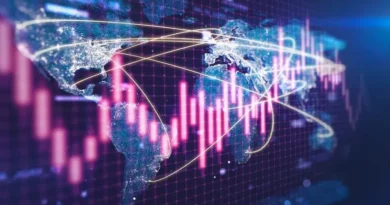From phones to smart cars: Huawei's latest transformation
Many had already written Huawei's obituary.
Excluded from the European markets, swept away by the United States, the Chinese telecommunications champion now seemed cut out of the game.
In 2019, the ban on access to critical US technologies – access necessary for the creation of its products – should have dashed the ambitions of the Shenzhen giant.
At least that's what the then-Trump administration thought, eager to fend off a player on track to become the global leader in smartphones and 5G technology.
In reality, the crusade against Huawei has simply transformed the company.
Which now, after having revised its operational plans and readjusted its business to the ongoing geopolitical tensions between the USA and China, is ready to take center stage again.
No longer, and not only, producing ultra-modern cell phones.
But also and above all by producing intelligent infrastructures, systems and cars.
Huawei's new life We start from the assumption that Huawei can count on a large portfolio of patents, especially in 5G technology.
And it is precisely on this that the company's leadership has leveraged, now engaged in at least three new strategic sectors, which have little or nothing to do with the sale of telephones: the production of intelligent vehicles, the implementation of transport based, again, on artificial intelligence, and the creation of cutting-edge chips.
The company is serious on all fronts, even if a concrete acceleration has occurred in the field of the first item listed.
Huawei has in fact signed a memorandum of understanding with the Chinese car manufacturer Changan Automobile for the establishment of a joint venture dedicated, precisely, to intelligent vehicles.
Changan Automobile will hold up to 40% stake in the joint venture, which will cover research and development, production and sales of intelligent vehicle systems and components.
“We have deepened our cooperation with Changan Automobile, and will also work with more strategic partner automakers to continuously explore new, open and win-win business models,” said Huawei intelligent automotive division president Richard Yu Chengdong.
Meanwhile, a year ago, Huawei explained that it had managed to reduce carbon emissions in a port in Tianjin thanks to the use of its 5G technology and the BeiDou satellite navigation system.
The company claimed to have transformed the C-section terminal in Beijiang Port Area into the world's first zero-carbon port terminal.
Finally, in August 2023, a new Huawei device was quietly introduced to the Chinese public: the Mate 60 series smartphone, powered by the Kirin 9000S chip.
For the record, the latter should rely on an advanced 7 nanometer processor, made in China, and signed by Semiconductor Manufacturing International Corp (Smic).
And smartphones? From the West to the rest of the world.
Huawei has chosen to focus on other markets to continue selling its smartphones, a sector which however no longer gives the impression of being the company's core business.
Of course, encouraging signs have emerged during 2023.
There are two trends to underline.
The first concerns China, where the company – in fifth position, behind Xiaomi, with 13% of the market share occupied – recorded an annual growth in the sale of its smartphones equal to +76.1%, compared at +7.3% recorded in the second quarter of 2022.
The Shenzhen giant is driving the premium segment, with the foldable Mate X3 and the P60 series models.
Beyond the Wall – here is the second trend – the situation is markedly different, given that Huawei is still outside the top 5.
Its goal, in any case, is to double annual sales, estimated at 30 million units.
And to think that, just a few years ago, the Shenzhen giant had Apple and Samsung in its sights, with 240 million smartphones sold annually.
Other times, other goals, other perspectives.
But no one in Shenzhen seems to regret the past.
Judging by the bright future that is unfolding on the horizon.
read also China invests billions in the chip sector: this is how Beijing distances itself from the USA




